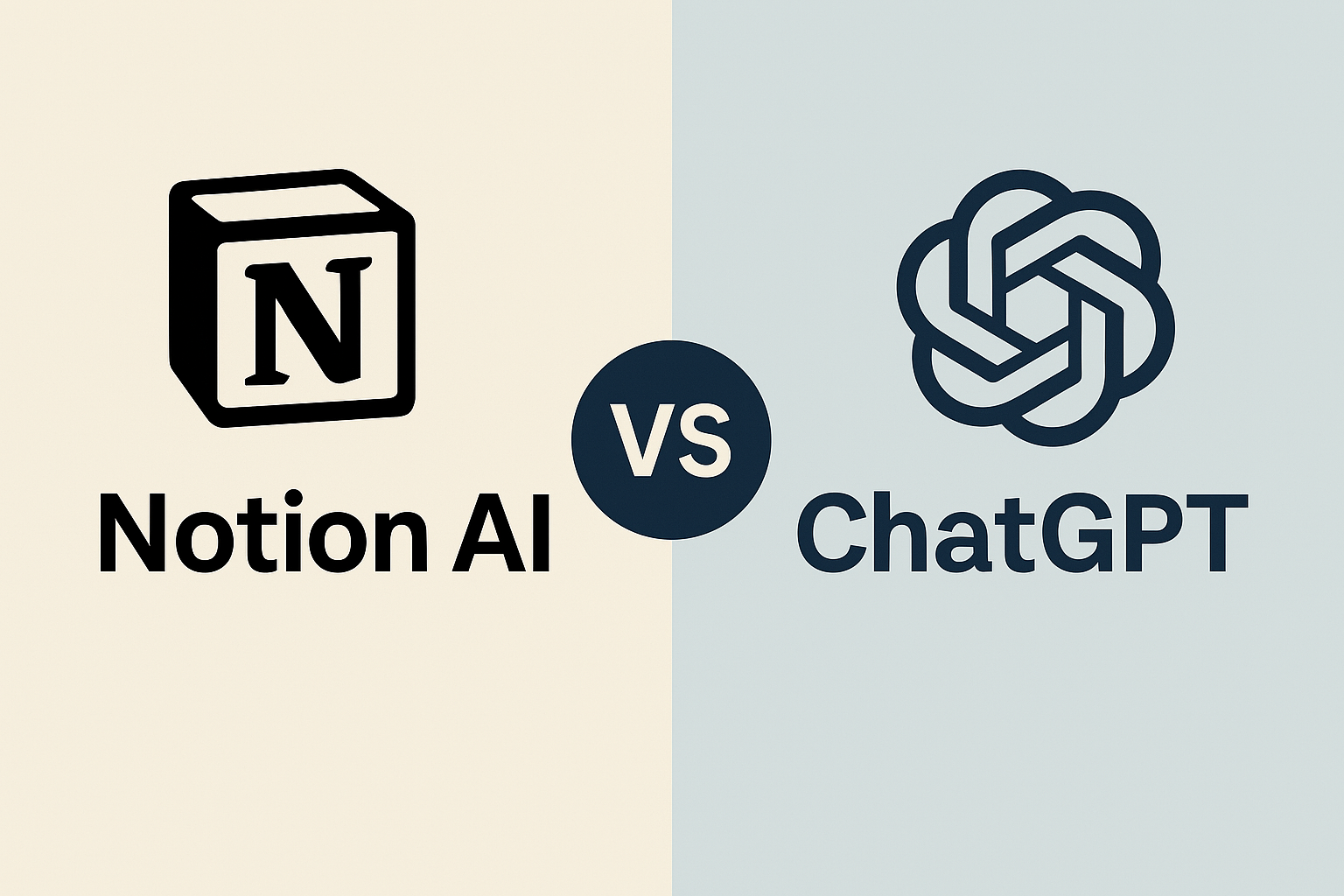Notion AI vs. ChatGPT – Which Tool Wins?

The latest AI innovations are bridging the gap between complex technology and simple solutions. The integration of AI into everyday business operations has reached a tipping point where accessibility meets functionality.
The integration capabilities of modern AI platforms are creating unprecedented workflow efficiency. These developments focus on practical applications rather than theoretical possibilities, addressing real pain points in business workflows. This represents a significant shift in how professionals approach their daily workflows, with early adopters reporting productivity improvements of 30-50% in routine tasks.
User feedback is driving rapid improvements in AI tool reliability and accuracy. Companies implementing these tools report immediate improvements in efficiency, accuracy, and employee satisfaction. The user experience has been refined to the point where even non-technical users can implement these solutions within hours rather than weeks.
The key is starting small and scaling up as you discover what works for your specific needs. The trajectory suggests that AI adoption will accelerate as tools become more specialized and user-friendly. For businesses looking to stay competitive, the time to explore these innovations is now, not later.
AI Battle Begins! Discover Which Tool Wins for Your Business!
AI Design Tools: Which Delivers the Best Results?
Artificial intelligence tools are becoming more accessible and practical for everyday business use. The integration of AI into everyday business operations has reached a tipping point where accessibility meets functionality.
Artificial Intelligence has revolutionized the design industry, offering tools that enhance creativity, streamline workflows, and optimize efficiency. With an increasing number of AI-powered design platforms available, businesses and creatives must determine which tool delivers the best results for their needs.
Key Factors to Consider
When evaluating AI design tools, consider the following aspects:
Ease of Use: A user-friendly interface is crucial for seamless design processes.
Customization & Flexibility: Can the tool adapt to specific styles and creative preferences?
Integration Capabilities: Does it work well with existing software and workflows?
Cost & Accessibility: Is it budget-friendly and accessible for small businesses or freelancers?
Output Quality: Does it produce high-resolution, visually appealing designs?
Top AI Design Tools in the Market
Adobe Firefly – AI-powered creative enhancements tailored for professionals.
Canva AI – Simple, intuitive AI-powered design for beginners and marketers.
DALL·E – AI-generated artwork with advanced customization options.
Runway ML – AI-driven creative tools ideal for video editing and motion graphics.
Fotor AI – Auto-enhancement features for quick photo editing.
The best AI design tool depends on individual needs. If you’re a professional designer, Adobe Firefly may offer the precision and depth required. For casual and marketing-related designs, Canva AI provides simplicity and effectiveness. Meanwhile, DALL·E excels in generating unique AI-generated visuals, while Runway ML is perfect for video editing innovations.
As AI continues to evolve, so will design capabilities. The key is to explore and experiment with different tools to discover which one aligns best with your creative vision.
Join the AI Showdown – Find Your Winning Tool Today
Free vs. Paid AI Tools: Worth the Upgrade?
The AI landscape continues to evolve at breakneck speed, with new developments reshaping how we work and live. The integration of AI into everyday business operations has reached a tipping point where accessibility meets functionality. Small businesses are discovering that AI tools can level the playing field with larger competitors.
These developments focus on practical applications rather than theoretical possibilities, addressing real pain points in business workflows. This represents a significant shift in how professionals approach their daily workflows, with early adopters reporting productivity improvements of 30-50% in routine tasks.
The integration capabilities of modern AI platforms are creating unprecedented workflow efficiency. Companies implementing these tools report immediate improvements in efficiency, accuracy, and employee satisfaction. The user experience has been refined to the point where even non-technical users can implement these solutions within hours rather than weeks.
As AI becomes more accessible, the question isn’t whether to adopt it, but how quickly you can implement it effectively. The trajectory suggests that AI adoption will accelerate as tools become more specialized and user-friendly. For businesses looking to stay competitive, the time to explore these innovations is now, not later.
Best AI Writing Tools: Comprehensive Comparison
The latest AI innovations are bridging the gap between complex technology and simple solutions. The integration of AI into everyday business operations has reached a tipping point where accessibility meets functionality.
Recent updates have focused on making AI more intuitive and user-friendly for non-technical users. These developments focus on practical applications rather than theoretical possibilities, addressing real pain points in business workflows. This represents a significant shift in how professionals approach their daily workflows, with early adopters reporting productivity improvements of 30-50% in routine tasks.
Artificial Intelligence has significantly transformed the way content is created, making writing more efficient, engaging, and accessible. Whether you’re a business owner, content creator, or student, AI-powered writing tools can help streamline your workflow. But with so many options available, which one delivers the best results?
Key Features to Look For in AI Writing Tools
When selecting the right AI writing tool, consider these crucial factors:
Writing Quality: How natural and coherent is the AI-generated text?
Creativity & Style: Does the tool adapt to different tones and writing styles?
Grammar & Readability: Does it offer grammar correction and readability improvements?
SEO & Optimization: Can it generate SEO-friendly content for better ranking?
Integration & Usability: Is the tool easy to use and integrate into your workflow?
The key is starting small and scaling up as you discover what works for your specific needs. The trajectory suggests that AI adoption will accelerate as tools become more specialized and user-friendly. For businesses looking to stay competitive, the time to explore these innovations is now, not later.

One response
Informative perspective! 🩷🩷🩷✔️